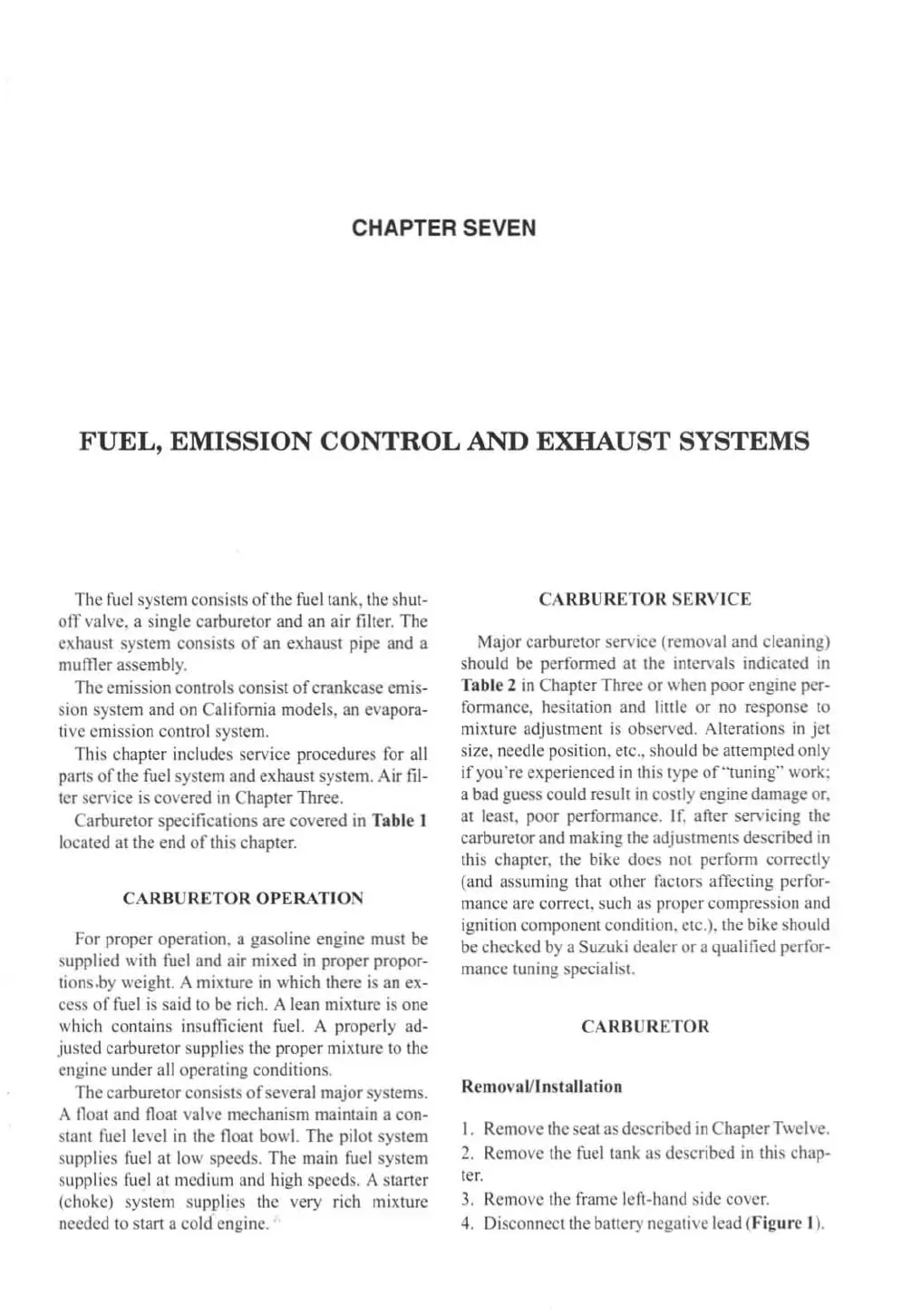CHAPTER SEVEN
FUEL,
EMISSION
CONTROL AND EXHAUST SYSTEMS
The
fuel
systelll consists
of
the
fuel
lank,
the
shut-
ofT
valve, a
si
ngle carburetor and an air filter. The
exhaust system consists
of
an
exhaust pipe
and
a
rnuffier assembly.
The emission controls consist
of
crankcase emis-
sion system and on
California models. an evapora-
tive emission conlrol system.
This chapler includes service procedures for
all
pans
of
the fuel system and exhaust system. Air fil-
ler service
is
covered
in
Chapter Three.
Carburetor specifications
aTC
covered
in
Table I
located at the end
of
this chapter.
CARBURETOR
OPERATIO
N
For proper operation. a gasoline engine
mu
st
be
supplied with fuel and air mixed
in
proper propor-
tions.by
weigh!. A mixture
in
which there is an ex-
cess
of
fuel
is
said to be rich. A lean mixture
is
one
which contains insufficient fuel. A properly
ad-
jus!ed
carburelor supplies !he proper mixlUre to !he
engine under all opcra!ing condhions.
The carburet
or
consis!s
of
several major system
s.
A float and float valve mechanism maintain a con-
stant fuel level
in
the float bowl. The pilot system
supplies fuel at low speed
s.
The main fuel system
su
pplies fuel
at
llledium and high speeds. A starter
(choke) system supplies the very rich mixture
needed to start a
cold engine.
CA
RBURETO
H;
SE
RVICE
Major carburetor service (r
emma
l and cleaning)
should
be
performed
at
the intervals indicated
in
Table 2
in
Chapter Three
or
when poor engine per-
formance, hesitation and linle
or
no response to
mixture adjustment
is
observed. Alterations
in
jet
size.
needle position. ete
..
should be attempted only
ifyou·re
experienced
in
this type
of'
·tuning" work:
a
bad guess could result
in
costly engine damage or,
at
least. poor performance.
If
. after servicing the
carburetor and making the adjustments described
in
this chapter. the bike does not perfoml correctly
(and assuming that olher factors affecting perfor-
mancc arc correct. such as pro
pCI'
compression and
ignition componcnl condition. elc.). the bike
should
be
checked by a Suzuki dealer
or
a qualified perfor-
mance tuning specia
li
st.
CA
RB
U
I
~ETO
H;
Removal!1 nstallation
1.
Remove the seat as described
in
Chaplcr Twel\ c.
2.
Remove the fuel tank as described
in
this chap-
Ie
I'
.
3.
Remove the frame left-hand s
id
e cover.
4.
Di
seonn
ectlhe
battery
negati\e
lead
(fig
ure I
).

